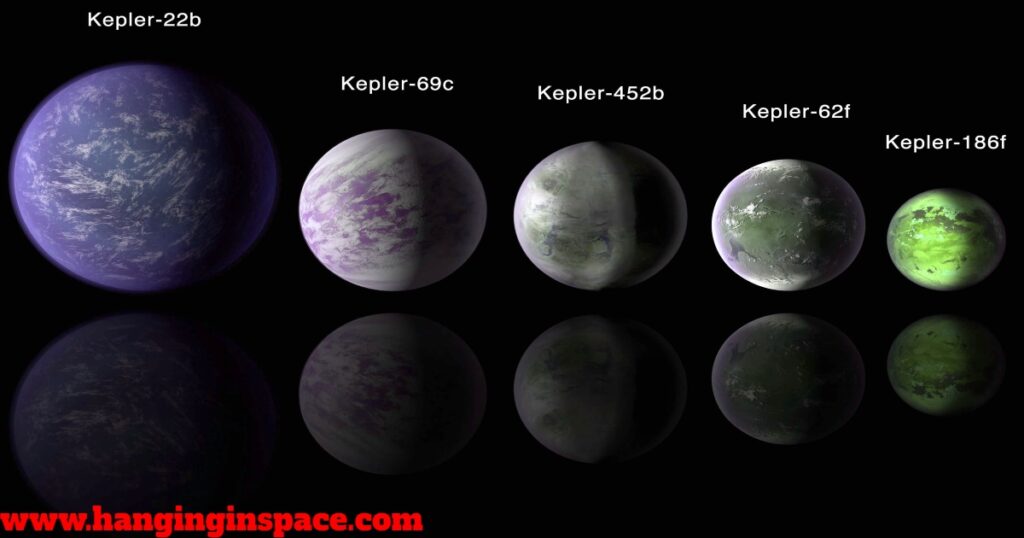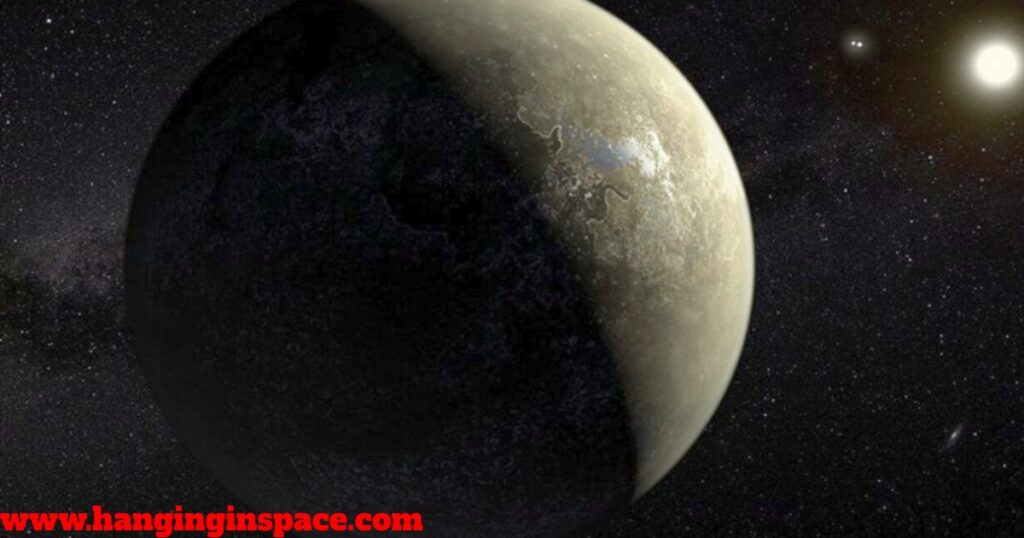Exoplanets, also known as extrasolar planets, are planets that reside outside our solar system, orbiting stars other than our Sun. These distant worlds come in remarkable sizes, compositions, and orbital characteristics, offering a glimpse into the diverse possibilities beyond our cosmic neighborhood.

What are the Types of Exoplanets?
Exoplanets are categorized into various types based on their size, composition, and formation process:
Gas Giants Exoplanets:
Gas Giants are the largest exoplanets, comparable to or even exceeding the size of Jupiter. Composed primarily of hydrogen and helium, they often reside close to their host stars, scorching in their heat.
Super-Earths Exoplanets:
Super-Earths exoplanets are larger than Earth but smaller than Neptune. They may possess atmospheres and potentially even liquid water on their surfaces, making them prime candidates in the search for life beyond Earth.
Ice Giants Exoplanets:
Similar in size to Neptune, Ice Giants exoplanets are composed primarily of ices, such as water, ammonia, and methane. They often reside in the outer regions of their planetary systems.
Hot Jupiters Exoplanets:
Hot Jupiters exoplanets are gas giants that are extremely close to their host stars, resulting in scorching temperatures exceeding 1,000 degrees Celsius. Their close proximity often leads to them being tidally locked, meaning one side permanently faces the star.
Sub-Neptunes Exoplanets:
Sub-Neptunes exoplanets are like smaller versions of Neptune, falling between the size of Earth and Neptune. Their diverse compositions and potential for harboring atmospheres make them intriguing study subjects.
How many Exoplanets have been discovered?

Since the first confirmed detection of an exoplanet in 1995, the pace of discovery has accelerated significantly.
5,587 confirmed exoplanets in 4,150 planetary systems were known as of February 23, 2024. 945 of these systems have more than one planet. The Kepler space telescope made the majority of these discoveries. The James Webb Space Telescope and TESS are also working to discover exoplanets.
Read also: NASA Exoplanet Archive
Gliese 667Cc, Kepler-22b, Kepler-69c, Kepler-62f, Kepler-186f, Kepler-442b, Kepler-452b, Kepler-1649c and TRAPPIST-1e are the most earth like exoplanets. NASA is searching for potential second earth exoplanets.
Proxima Centauri b:
Proxima Centauri b is our closest known exoplanet neighbor, located just four light-years away. A super-earth exoplanet called Proxima Centauri b revolves around an M-type star. Its mass is 1.27 Earth masses, its orbital period is 11.2 days, and its distance from its star is 0.0485 AU.

Potential for Habitability:
The search for habitable exoplanets focuses on identifying worlds with conditions conducive to life as we know it. Scientists look for key indicators of habitability, such as the presence of liquid water, stable atmospheres, and moderate temperatures.
Using advanced telescopes and spectroscopic methods, researchers search for detectable indicators of life known as biosignatures, such as atmospheric chemicals created by living things in the atmospheres of exoplanets.
Exoplanets can possess a wide range of atmospheres, ranging from those devoid of any atmosphere to those composed of elements like hydrogen, helium, water vapor, and methane. The composition of an exoplanet’s atmosphere provides valuable clues about its potential for habitability.
Is there a possibility of Alien Life?
Scientists are particularly interested in exoplanets located within the habitable zone of their star system, the region where liquid water could potentially exist on the planet’s surface. The discovery of such planets raises intriguing questions about the possibility of extraterrestrial life elsewhere.
Conclusion:
As astronomers continue to discover and study these distant worlds, we gain valuable insights into the formation, evolution, and potential habitability of planets beyond our solar system.
The quest to find exoplanets has entered a golden age. With the continuous development of telescopes and detection methods, the number of confirmed exoplanets has skyrocketed, exceeding 5,000 and counting.
This explosion in discoveries has opened a new chapter in astronomy, challenging our understanding of planetary formation and raising the tantalizing possibility of finding habitable planets in this vast universe.
